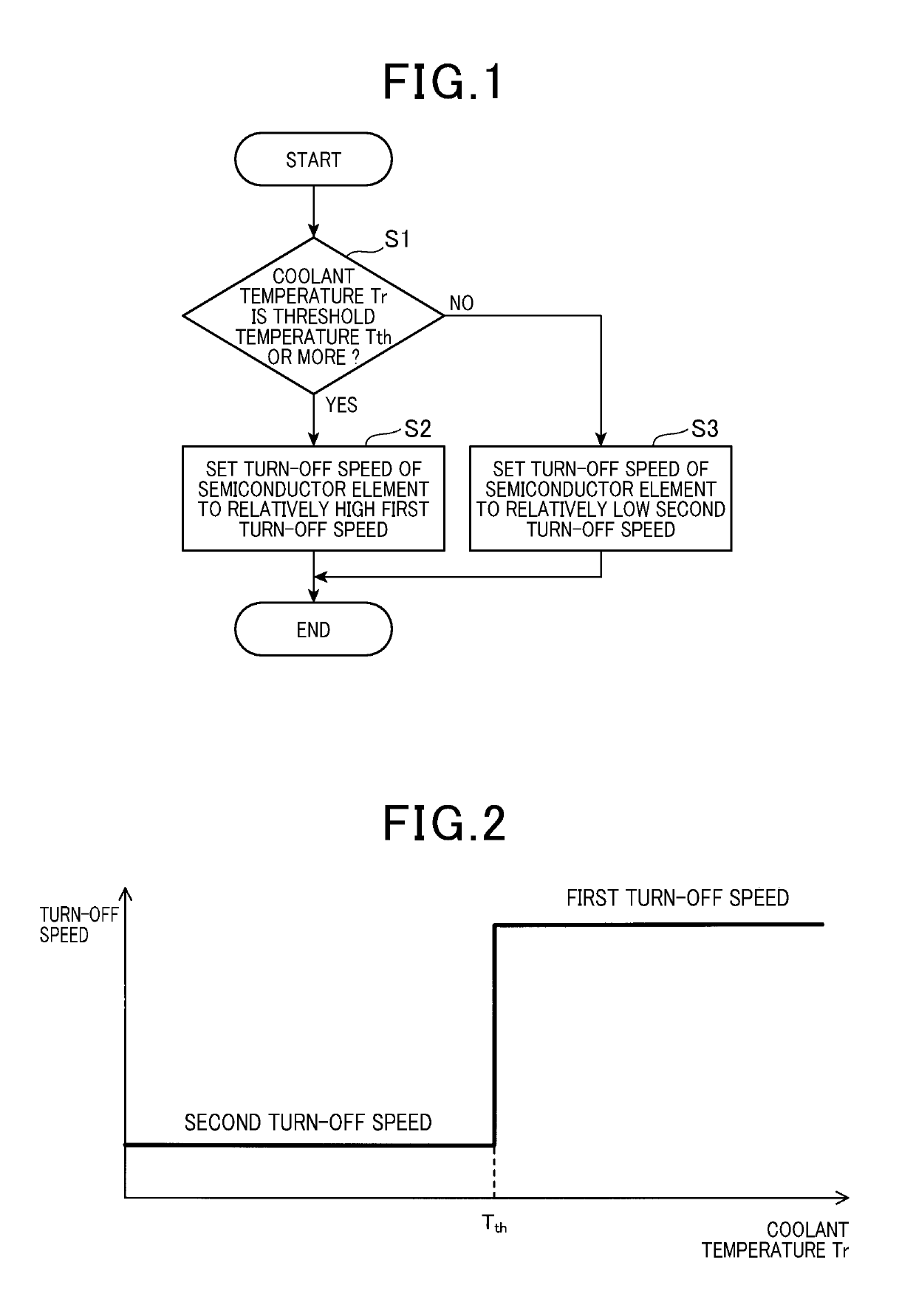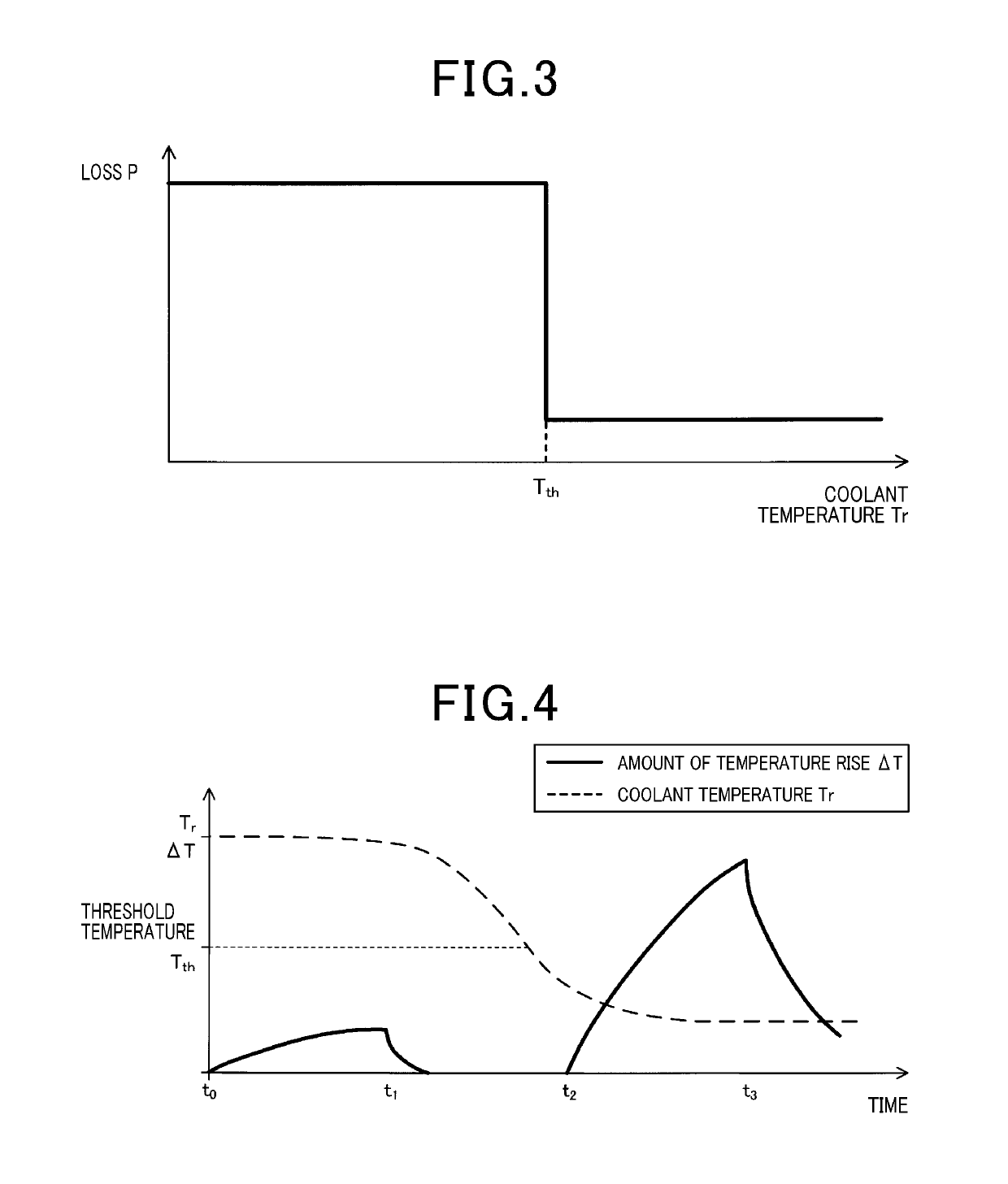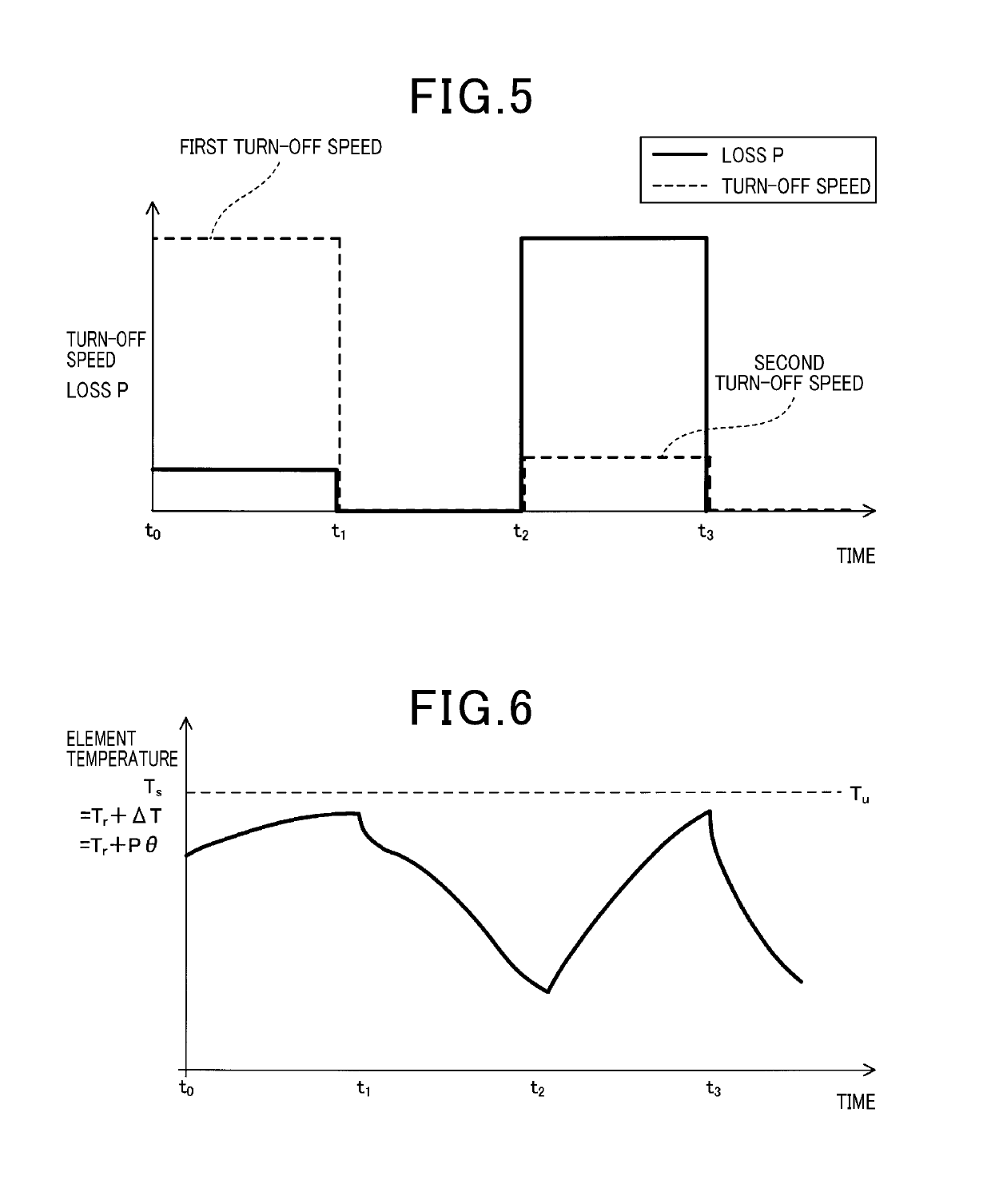Power conversion apparatus
a technology of power conversion apparatus and power conversion device, which is applied in the direction of pulse manipulation, pulse technique, and semiconductor/solid-state device details, etc., can solve the problems of increasing reducing the amount of heat generation (loss), and difficulty in reducing the manufacturing cost of power conversion apparatus, so as to reduce the manufacturing cost of the power conversion apparatus. the effect of high resistance to the surge of the turn-off speed
- Summary
- Abstract
- Description
- Claims
- Application Information
AI Technical Summary
Benefits of technology
Problems solved by technology
Method used
Image
Examples
first embodiment
[0049
[0050]An embodiment of the power conversion apparatus will be described with reference to FIG. 1 to FIG. 16. As shown in FIG. 10 to FIG. 12, a power conversion apparatus 1 of the present embodiment includes semiconductor modules 3 including semiconductor elements 2, a controller 4, a cooler 5, and temperature sensors 6.
[0051]The controller 4 is connected to the semiconductor modules 3 and controls switching operations of the semiconductor elements 2. In the cooler 5, flow paths 51 are formed through which a coolant 50 flows. The cooler 5 cools the semiconductor elements 2. The temperature sensors 6 are disposed in the flow paths 51 of the cooler 5. The temperature sensors 6 measure a coolant temperature Tr, which is a temperature of the coolant 50. The temperature sensors 6 are connected to the controller 4.
[0052]The controller 4 controls turn-off speed (off speed) of the semiconductor elements 2 based on the measurement value of the coolant temperature Tr. As shown in FIG. 2, ...
second embodiment
[0087
[0088]The present embodiment is an example in which the circuit configuration of the controller 4 is modified. As shown in FIG. 17, the controller 4 of the present embodiment includes a constant current circuit 47 connected between the control electrode 21 of the semiconductor element 2 and the ground. The constant current circuit 47 controls the value of the current Ig flowing from the control electrode 21 to the ground so as to be constant and can change the current value to a predetermined value. The controller 4 changes the value of the current Ig by using the constant current circuit 47 to control the turn-off speed of the semiconductor element 2.
[0089]The constant current circuit 47 includes a resistor Ra, a transistor 46, and a current controller 45. The resistor Ra and the transistor 46 are connected in series. In addition, the current controller 45 is connected to a base 461 of the transistor 46. The constant current circuit 47 feeds back the voltage drop, which is gen...
third embodiment
[0094
[0095]The present embodiment is an example in which the number of changing the turn-off speed is modified. As shown in FIG. 18, in the present embodiment, as the coolant temperature Tr rises, the turn-off speed is increased multiple times step by step. Hence, as shown in FIG. 19, as the coolant temperature Tr rises, the loss of the semiconductor element 2 decreases multiple times step by step.
[0096]In the present embodiment, since the turn-off speed is changed multiple times as the coolant temperature Tr rises, the turn-off speed can be a value more suitable for the coolant temperature Tr. Hence, the element temperature Ts can be prevented from exceeding the upper limit value Tu more effectively.
[0097]In addition, the third embodiment includes configurations and operational advantages similar to those of the first embodiment.
PUM
 Login to View More
Login to View More Abstract
Description
Claims
Application Information
 Login to View More
Login to View More - R&D
- Intellectual Property
- Life Sciences
- Materials
- Tech Scout
- Unparalleled Data Quality
- Higher Quality Content
- 60% Fewer Hallucinations
Browse by: Latest US Patents, China's latest patents, Technical Efficacy Thesaurus, Application Domain, Technology Topic, Popular Technical Reports.
© 2025 PatSnap. All rights reserved.Legal|Privacy policy|Modern Slavery Act Transparency Statement|Sitemap|About US| Contact US: help@patsnap.com



